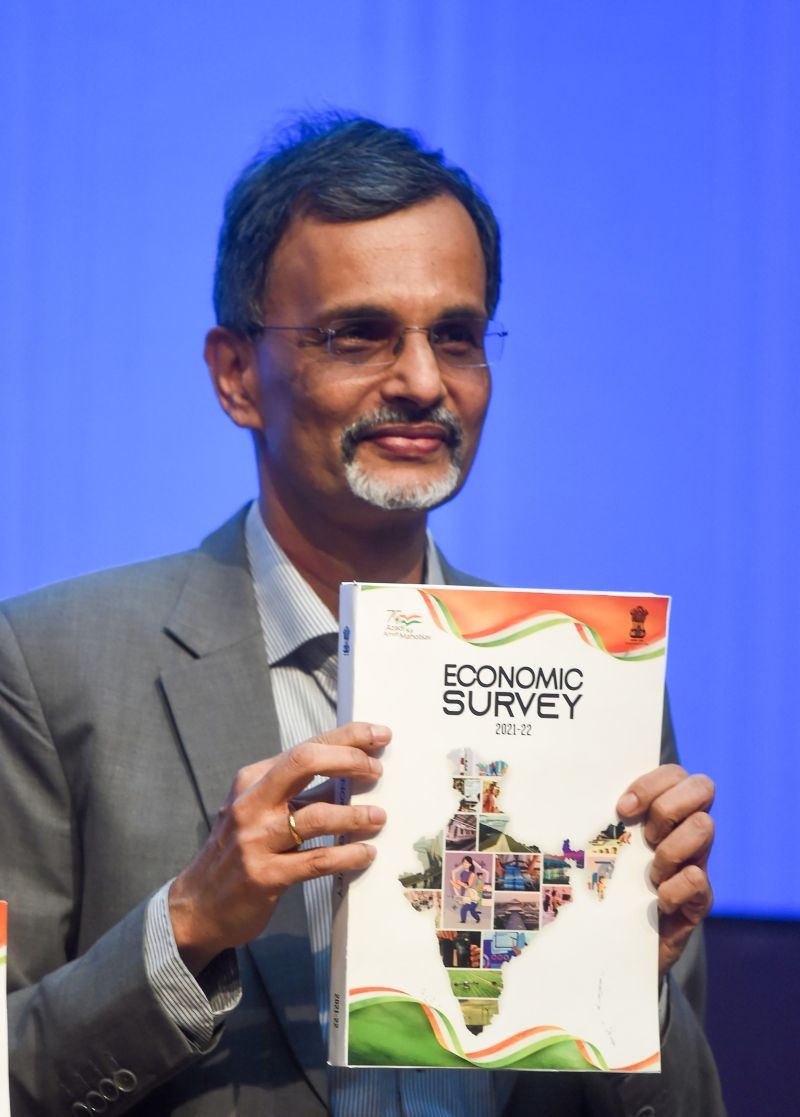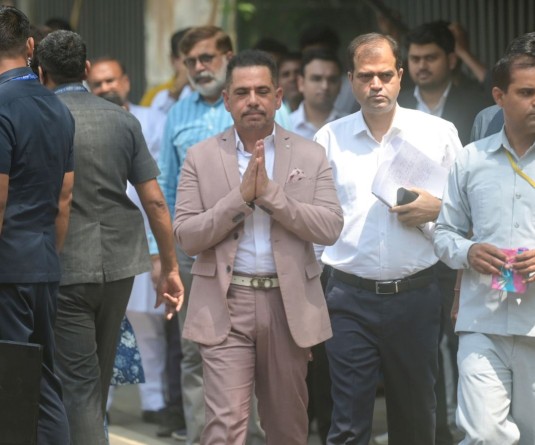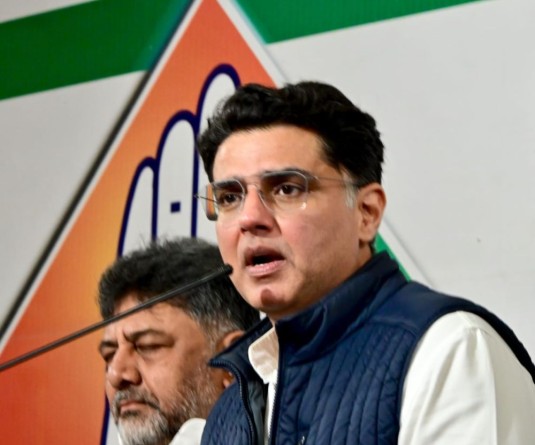Chief Economic Advisor, V Anantha Nageswaran addresses a press conference after tabling Economic Survey 2021-22 in both the Houses of Parliament by Union Finance Minister Nirmala Sitharaman (unseen), in New Delhi on January 31. (PTI Photo)

New Delhi, January 31 (PTI): India will retain its tag of the world's fastest-growing major economy as the pre-Budget Economic Survey on Monday forecast an 8-8.5 per cent GDP growth in the fiscal year starting in April, saying it has the fiscal space to do more to support the economy and is well placed to meet the future challenges.
India is poised to wrest the title world-beating economy tag this fiscal with a projected growth of 9.2 per cent, and the widespread vaccine coverage, supply-side reforms and easing of regulations are going to support it in the next.
The Economic Survey -- an annual report card of the economy -- presented in Parliament by Finance Minister Nirmala Sitharaman, warned about risks from global inflation and pandemic-related disruptions.
Sitharaman is expected to announce plans to boost spending to revive investment and create jobs in her Budget to be presented on Tuesday.
The survey assumed oil prices will range between USD 70 and 75 per barrel next year even though they are above USD 90 now. It also assumed a normal monsoon rainfall and an orderly withdrawal of global liquidity by major central banks.
"The projection is based on the assumption that there will be no further debilitating pandemic related economic disruption, monsoon will be normal, withdrawal of global liquidity by major central banks will be orderly," the survey said.
The growth projections are in line with the forecast by the World Bank but less than 9 per cent forecast of IMF. They are slightly higher than that predicted by S&P and Moody's.
The growth will be supported by "widespread vaccine coverage, gains from supply-side reforms and easing of regulations, robust export growth, and availability of fiscal space to ramp up capital spending," the survey said.
Sanjeev Sanyal, principal economic adviser at the finance ministry and the lead author of the survey, said, "India does need to be wary of imported inflation, especially from elevated global energy prices."
India is 85 per cent dependent on imports to meet its oil needs.
"The global environment still remains uncertain," the survey said citing the planned withdrawal of monetary support by major central banks, including the US Federal Reserve.
Higher rates elsewhere could lead to capital outflows for India.
The survey said the year ahead is also well poised for a pick-up in private sector investment with the financial system in a good position to provide support to the revival of the economy.
The projection of 8-8.5 per cent growth in 2022-23 is not coming on a low base. Advance estimates already suggest real GDP growth of 9.2 per cent in 2021 22. On a pre-COVID base of 2019 20, this would tantamount to 10 per cent growth.
The Economic Survey has highlighted the agile approach to fiscal and monetary management that has been undertaken over the past years and recognises the risks faced by the Indian economy.
Higher oil prices would translate into relatively higher inflation rates.
The survey recognises that with high tax buoyancy, there would be enough fiscal space to sustain the growth momentum of the government's capital expenditure while meeting the 2021-22 budgeted fiscal deficit of 6.8 per cent of GDP.
On the fiscal side, the main concern now is to calibrate a reduction path for the general government debt-GDP ratio which is estimated to touch 90 per cent in 2021-22 in the survey. This will result in high committed expenditures on account of interest payments relative to revenue receipts, thereby squeezing the fiscal space available for capital expenditures.
The survey confirms that the two Covid-affected years broadly split the economy into two. One part of the economy, including the MSME sectors and some of the important service sectors like trade, transport, tourism, retail, hotel, entertainment and recreation, was the first to experience the adverse impact and is likely to be the last to come out of it.
On the other hand, a number of sectors proved to be resilient and some even prospered during the pandemic. These include information and communication, financial, professional and business services.
On the whole, the share of the services sector fell from 55 per cent in 2019-20 to 53 per cent in 2021-22.
"These have been difficult times for the world economy. It is not just about the immediate disruptions and uncertainty caused by repeated waves of the pandemic but also the longer-term uncertainty about the post-Covid world due to accelerated shifts in technology, consumer behaviour, supply-chains, geopolitics, climate change and a host of other factors," Sanyal wrote in the survey.
Disclaimer: This story is auto-generated from news agency feeds and has not been edited by The Morung Express.
Source: PTI






